 For today’s episode, we are joined by Helene Cahen, a renowned innovator, consultant, and author of Fire Up Innovation: Sparking and Sustaining Innovation Teams. Helene, with over 20 years of experience in helping companies navigate innovation challenges, shared her journey and insights into fostering a culture of innovation within organizations.
For today’s episode, we are joined by Helene Cahen, a renowned innovator, consultant, and author of Fire Up Innovation: Sparking and Sustaining Innovation Teams. Helene, with over 20 years of experience in helping companies navigate innovation challenges, shared her journey and insights into fostering a culture of innovation within organizations.
A Practitioner’s Perspective
Helene’s approach to innovation is deeply practical. As a practitioner, she emphasizes the importance of not just reading about innovation but actively practicing it. Her book is designed to be interactive, encouraging readers to engage with exercises and tools that can be applied directly to their work environments. This hands-on approach ensures that innovation is not just a theoretical concept but a practical, actionable process.
Innovation Through a New Lens
Helene’s book stands out by focusing not only on the outcomes of innovation but also on the process and thinking necessary to achieve it. She highlights the importance of understanding the problem at hand before jumping to solutions. By deeply understanding the challenge, teams can come up with more relevant and effective solutions. This involves a structured process of diverging to explore multiple ideas and then converging to select the most promising ones.
The Importance of Team Dynamics
Innovation is often a team effort, requiring collaboration across different functions and perspectives. Helene underscores the importance of having a common process, tools, and language to facilitate better teamwork. Understanding individual problem-solving styles and how they contribute to team dynamics is crucial. She introduces tools like Foresight to map these styles and enhance team collaboration.
Sustaining Innovation
Maintaining an innovative environment requires a supportive culture from the top down. Helene advises leaders to appreciate and learn from failures rather than penalizing them. This approach encourages teams to take risks and innovate without fear. A culture that values learning from every project, successful or not, fosters sustained innovation.
Essential Tools for Innovation
Helene highlights practical tools like virtual whiteboards (e.g., Miro) for team collaboration. These tools allow for asynchronous work, where team members can contribute ideas at their convenience, and help in organizing and clustering ideas for better clarity and focus. Simple yet powerful tools like these can significantly enhance the innovation process.
Conclusion
Helene Cahen’s insights provide a valuable framework for companies looking to spark and sustain innovation. By focusing on the process, fostering collaboration, and maintaining a supportive culture, organizations can navigate the challenges of innovation and drive meaningful change. For more insights and practical tools, visit her website at fireupinnovation.com.
You may also refer to the transcripts below for the full transciption (not edited) of the interview.
Greg Voisen
Well, welcome back to Inside Personal Growth. This is Greg Voisen, the host of Inside Personal Growth. And today joining us in, where are you in the Bay Area exactly. I mean...
Helene Cahen
I am in Berkeley, 10 minutes from campus.
Greg Voisen
Berkeley, okay. Is Helene Cahen, and she has a book out called Fire Up Innovation. I had to put that in front of the camera. And it's "Sparking and Sustaining Innovation Teams. And we know in this world that's fast paced today and corporations always wanting to get more out of their employees that innovation is a big is a big deal. And I'm going to tell them a little bit about you. She's an innovator, consultant, trainer, facilitator and over 20 years experience helping companies navigate innovation challenges. She's the author of Fire Up Innovation, and a TEDx speaker, you can go out and look for that. She is the founder and principal consultant at fire up innovation consulting, previously strategic insights, where she guides fortune 500 companies, small businesses and nonprofits to understand innovation, create innovation, new products, services, build effective teams, and support a user centered culture. She's also a lecturer, coach and facilitator at the University of California, Berkeley, Haas School of Business, and the Haas executive program, teaching innovation principles to those students and executive. She born and raised in Paris, graduated with a business degree with the elite science, po Paris trained in creative problem solving and design thinking. Lean Elaine is also received a master's of science and Creativity and Change Leadership from Buffalo State University of New York. And she is a certified foresight facilitator. You can learn more about her book or speaking engagements and her services by going to fireupinnovation.com. Well, it's a pleasure to have you on Inside Personal Growth, and finally get to do our interview together. And I'm excited for my listeners, because I think you've got some things to tell us not only about the book, but what's inside the book, the way the books laid out, I will tell my people, this is truly not just a book you put on the shelf, this is a book you can use. You can actually write in it you can do the exercises in it you can you really is something don't be afraid to pick this up and write it. I know so many people that they get a book and it's like, oh, I don't want to do it. And I think you did say to me that you do have some handouts people can get is that correct from your website, if they don't want to write in the book.
Helene Cahen
If you get in the book, there's a QR code. And you can get everything downloaded as a journal. So you can take as many notes as possible and scratch it and start again. So, it's definitely about to…
Greg Voisen
There you go. So that's one way. So, what inspired you to write fire up innovation? And how did your personal journey shaped the ideas kind of presented in this book? Because you really do talk about a lot? Yeah,
Helene Cahen
So, I'm defining myself as a practitioner. So I practice innovation. I train I coach, and I facilitated. And I wanted to share my knowledge of experience. And I wanted to do in a way that kind of were present. If you hire me, how do I get myself in a book? And so that was my personal challenge. And so that's why I didn't want it to be a book to read, because you can read innovation as much as possible, he won't change anything unless you do. So that book has a reading part because I wanted to anchored. I don't want to be a toolbar to book because that doesn't help either. I wanted to anchor in the theory and understanding of innovation and creativity. But I wanted to make it super practical so that each chapter has a practice. And there is some tools. So I would really recommend to use it, and by trying new things, and then observe, reflect, learn and keep going. Because that's really how you learn about innovation. So I wanted the book to reflect my philosophy, and the way I work with my clients as well. Well,
Greg Voisen
I think sparking and sustaining innovation teams is the key. And this is, you know, most people are working in teams when they're innovating. So can you elaborate on what you mean by innovation through a new lens, and how this perspective differs, like from traditional views on innovation, because, you know, there's so many books out there that people have written about innovation and creativity, using your intuition, all this kind of stuff to actually become more innovative. And I know that part of it is us reaching a point in our own physical being, you know, where we're having fun, we're at play. We're, we're getting endorphins released in our body, we're getting higher levels of oxytocin toxins in our body, because play is a big part of it. Can you speak about that?
Helene Cahen
Yeah, so play is part of creativity, and no brain works better if we have fun, and enjoy the experience. And the way that maybe my book is different than a lot of book is we talk a lot about the outcome. Of course, that's what we want. But we don't talk so much about the process and the thinking, necessary for innovation. And it is different than working by yourself, because you work by yourself, you have certain way you solve problem, and you can do it. Well, you put a team together. And usually the team is put together based on their background. So we need a finance person, and we need an r&d person, and we need a marketing person, which is great, but then you put them together and then might not have a clear process to use, they might not have a common language, they might not have tools. And they might not even know how they solve problems themselves. And so when you work in a team, and people saw problem differently, which we all do, but we don't know about it, it can create a lot of tensions and issues of miscommunication, which is not due by the fact that we not creative, it just a way that we creative in a different ways. And that's really what I wanted to suggest and emphasize. So whatever the outcome that you want to use this, this book can help, better collaboration more efficient, and then more fun in collaborating, because we can remove some of the friction and tension and Ondra the white together?
Greg Voisen
Well, you know, I think it's when people come up with new ideas, or they innovate, you know, a lot of times people will say, Well, you know, I know this might sound silly to you. But you know, I was in the shower, and I had this great idea, or I was out on a jog and I had a great idea. Or I was in the middle of a meditation, and all of a sudden I got this, wham, you know, like, there are people that look at it that way. It's I know, Roger, Van OSH is up in your area, and it's a whack inside of the head. He's going to be on the show here in the next couple of weeks. And you know, you know, it's that whack sometimes on the side of the head. But people don't usually think of innovation. It's almost like a conundrum is a process. So can you walk us through the core principles of innovation process that you discuss in the book, and how the teams can apply these principles effectively? Because I know one thing is sparking the idea. The next thing is then Well, after you spark the idea, we've got to go through and prove that fundamentally, we've got to walk through how are we going to make this thing come true? Right, how are we going to manifest this? So talk about that process? If you would,
Helene Cahen
I would and I just want to kind of do a general response to what you say is the idea I believe is the easiest thing I do is a very, very small new ideas is a very, very small part of an innovation process. And yet, that's the one that we talked about. So let me go through the steps. And I can tell you how much ice officers that were put on the idea. So the first thing is you have to really understand the problem you're trying to solve and what is the challenge at hand. And often we make assumptions that this is what we want to do. And if we take time to talk to users, observe what's happening, understanding different level of pains and need gap, then you can realize that the problem is now We have a problem. And it's there's a different one that is more important, or more relevant, or more unique, or we define girls. So the first thing is spend time on understanding the problem, then the second part is come up with ideas. And yes, it's important. And in the idea phase, like in every phase of an innovation process is two steps. There is the divert part when we look at a lot of options, and the Convert part when we select. So what we usually think about when storming ideas is only the diverge part of the ideation step, which is step number two. And that one, I would say, if I work with a team for three or four days, I probably spend no more than an hour on that part. So it's really a very small part, it's easy to come up with ideas, like what do we do next. And the next step in the ideation is actually how do we select those that we want to move forward. And then once you selected some ideas, and I would always want to keep more than one, because you don't know what's going to happen next. The next one is developing those ideas, make them into solution, prototype them, test them, get feedback, see, because ideas are often a bunch of words, but what's happening the reality. And that's where that development phase is really critical. And then once you narrow them down, get some feedback, think there is a way to to make it happen, then the last phase, phase four is actually implementing it. and implementing has also a lot of activities, because you have to think about all the ways that you may be part, make it possible, and then decide all of the details, whether it's a product, you want to manufacture it, you want to sell it, you want to get the financial, you want all the elements of the business model to be there. So this is a so as back to your question, this is a whole process. And it's much more than ideas.
Greg Voisen
Yeah, and it is all outlined in the book very specifically. And I want my listeners to know that. And you know, when you work in teams, and to get teams kind of working together, right to solve this problem. It you like you said, you're bringing people in from different departments might be marketing might be sales might be engineering might be all these different people with different ideas that they're sharing around the problem they're trying to solve. We've all identified this, we agree it's the right one. In your experience, what are some of the common challenges that innovation teams face? And how can they overcome these challenges to work more collaboratively? That's the key word here. And effectively, because sometimes those teams don't see eye to eye, but they need to.
Helene Cahen
Yes, so to your point on coming from different functional role, and also experience, previous experience, level of experience, our personal life experience, we all kind of see things a certain way with our own assumptions. And so what's really important for the team is to kind of emerge those different perspective. And that's also the beauty of innovation team is those multiple perspective are important, because the problem solution that you're going to come with the solution coming with also has is multifaceted. So you need all those perspective, as the world is multi perspective. And the solution will have those are the challenges, how do you make them work together? And so that's why the having a common process and tools really helps. Because then instead of being stuck in what do we do next? Or how are we going to facilitate that meeting, or what tool can help, they can really focus on the content, which is really those ideas or steps or those things that really are important. And so the process, having a good process, a good tool, common language, common approach, whatever it is, makes the the outcome and the content much, you have much more time and energy for it, instead of fighting on how are we going to facilitate this meeting, or what needs to happen next, we all know and we all agree, an organization might have different ones. And it doesn't matter as much as having a clear process that everybody is trained is and is on board about that. And then the other part that I feel it's really important, and sometimes we don't talk so much is understanding how we naturally solve problems. And be aware that this is unique to us. And it's different with other people. And so that's why I use a tool. It's called foresight, and I can tell you more if we want later. But we really have smart mapping your own way of solving problem. And then you can map the team way of solving problem and you start emerging some of the team dynamics that can be potentially an issue, and then you can scaffold and teach those skills. So let's say if the team is now really strong in coming up with ideas that's not that strong part. You can be sure you have some tools that are going to force them to not rush after the first 10 ideas but go to 400 not 200 or 500, or whatever it is. So the tool can help facilitate where naturally we might cut corners or not go in that direction.
Greg Voisen
Well, if people want to learn more about foresight, that particular tool, then go to your website. And they obviously, as I'm going to hold up here, again, they can get the book, that's what they want you to do is get a copy of the book, and all the resources are there at the website. And I, from what you said, I understand, you've got different personality, different types of people together, I can imagine that finding what your style is like, and then finding what others and then coming together with some kind of map makes it much easier for us to get to where we need to go. It's almost like going in a car and somebody saying, No, we're going here, we're going there, we're going here. No, we're all going over here. And here's that what we've all decided and how we're going to get there. And that brings me to this. One of the chapters is about sustaining creativity and innovation in a company. And I do get that, hey, once you innovate, or you create something, and you put it to market, and you start to create, generate sales, or whatever it might be, or it solves some problem. You know, sometimes things tail off, people aren't working at it. But the reality is, is companies today, with the speed at which technology is taking us have to stay at the forefront of innovation. This is a critical part. And what are some of the key strategies for maintaining an innovative environment over a long term period of time? What would you tell a CEO who's listening to this, or a top manager who's like, hey, well, we have the budget, but we just haven't implemented it. Because we're too busy doing what we normally do, which is selling what we sell up
Helene Cahen
to this couple of things. The first one is, I think, in this environment, particularly, if we don't innovate, the business is not going to grow or business might go down. And we talk a lot about the risk of innovating. And that's why some companies don't do it or don't take much risk. But we don't talk as much of the risk of not innovating. Like if you're not innovating in a market that is changing and things are changing around you, then you're not going to maintain your market share, you're likely to go down. So innovating innovation is critical. And to your point, it comes from the higher level, you have to have a culture that support innovation, you have to have investment that support innovation, with clear criteria. And I'm not saying you just throw money at it, but you clear about what you want to accomplish. But you want to do it over time, because innovation also tech sometimes. And then the biggest thing is I think is how is the company treating what they consider failure. And if a team is working on a project, and at some point, the project is not going to work because it doesn't meet the criteria, because it's whatever too expensive, take more time, you don't have the technology, what happens. And if the company appreciate that, and learn some lessons and kind of use that to get to the next innovation, that's going to sustain innovation. On the other hand, if there is a judgment, if the team has some potentially bad or negative consequences about this, if we just put the project under the rug, and don't even talk about what we learn, then it's not going to be a cure to that sustained innovation, because the next team is going to say, Well, what happened on Project X, we want to be really careful. So maybe we don't push the idea so much. Maybe we don't talk about this. And then it's kind of a while
Greg Voisen
you're kind of building a culture of fear. And you can't have fear. If you're going to innovate, you have to be bold, you have to be willing to step out. And I get that if management thinks Hey, the the last project didn't go well. And we invested in it. No innovation is what it is. It's in a sense, it's your r&d department. We could talk about that. But it's really your research and development department that's that's working on this and you have to be there. Now one of the things that you cover in this book is you call it the basic toolbox for sustaining innovation. And I think this is kind of the meat and potatoes of the book is the toolbox. Can you highlight a few of the essential tools from the toolbox and explain how they could be used in like real world situations. Okay,
Helene Cahen
and I'll start with a small level because there's a lot of toolbox and they show you 100 book tools, but a tool is only as good as you understand how to build your house, basically the foundation. So I'll start with a simple thing. And I really believe that whiteboards and post it note you know, virtual notes on a whiteboard is a great tool because you can work together. You can work a synchronously it's the new wall worm, you know, you used to have that big wound on big projects that we keep everything. This is where we can do Keep everything What
Greg Voisen
about what? Excuse me, but what about something like Miro? Yeah, exactly where teams can get together and put post it notes and sticky notes and do I saw at your website, all the things you do physically, and I think that's great, but we live in a world where everybody's all over the place now, working from Paris, working from Germany, working from wherever. So miracle is a good place to do that. Okay, virtual
Helene Cahen
whiteboard the best, because they allow you to work a synchronously you have, the team in Germany has an idea at two o'clock in the morning, they can put it there, and it's there for the team the next day. And it keeps everything in one place. And the other thing that is nice with that is the ability to move things. So let's say you come up and you ask the team to come up with ideas, and you give them a couple of days. So you have a bunch of ideas. Now we can say what do we saw as a diverging part of the ideation. Now how are we going to get them together. And that's a tool is clustering. So we would group those notes together and find some themes about it that are bigger than each idea. But now we have some theme, so we can move them. And then we can put a title and then we can rank them and we can vote on it. And all those. So I think having notes, the other thing was notes, which is nice is everybody can work at the same time. It works for introvert and extrovert, because it gives because of the whiteboard can get synchronous, give people time to think about it. So you don't always have to work together. And so I really think that that's a really basic tool, but I think they're underused. And I would say you know, just try it, play with it, me all they have free tests, I would definitely encourage this as a really, really basic tool. But just that can really make a difference.
Greg Voisen
There's also another one that I could encourage people because I've used many of these, it's called explain everything. And it is recently been bought out, I think by paradox or something. But the point is, is that, you know, you're trying to find a tool that you can work across time zones and areas with people to collaborate and innovate together. And there's some really interesting tools out there that have evolved as a result of I mean, pre pandemic, many of these didn't exist post pandemic, you know, if you want to talk what's good, we've really had a change in technology with relation to post pandemic tools that people use for innovation, and communicate, right?
Helene Cahen
Yes, there's a lot and I think they can be used to they can be used more, if you if the other
Greg Voisen
thing is, what does Elene use? What do you use with your clients.
Helene Cahen
So I use whiteboard, I use POST, its, that's a basic, if I if I look at each of the four phases, I mean, give you one key tool for each, in the Oh, and one thing that's also really important, and sometimes we don't talk about it so much, is having clear criteria for decisions upfront in a project. Because otherwise, we get some problem, we get ideas, and then everybody kind of vote on a very subjective way. And you actually miss the point. So that's really simple. But it's really critical.
Greg Voisen
I know that people are not going to believe this, but I keep these around and I buy them see how big these post it notes are. And I have a whole closet full of these because I use these all the time. Now these post it notes are available. I don't think there's a lot of people out there probably know, they make them this size. I don't even know what this is. This is a lemon by 11. So they're great. They're awesome. You know, when you gotta get your point across, so post it notes. Definitely. So look, five week Innovation Challenge. The book includes this five week Innovation Challenge. What is the purpose of this challenge, in your estimation? And how can individuals and teams benefit from undertaking the challenge? I love the fact that you put a challenge in because it's like, okay, if you guys haven't been as innovated, here's a challenge that I've got for you. Tell us about it,
Helene Cahen
thought the ideas is ascending, it's you have to learn by doing it. And by doing it over time, I think they say it takes four weeks to kick some new habits. So I wanted to and what it forces you so is this five part, the first part is just you. So I suggest you do new activities, new things, change your habits, and then reflect, observe what happens and then reflect. And then the second week is you and somebody else. So when you start creating new things with somebody else what happened in the challenge, and I have that same a discussion with a partner. It could be a work partner, it can be a personal partner with me in community. And then the third week is about doing this within a kind of water elements. So the team, if you have a team can be a work team or some other team and same thing, make some change and then discuss what happened and not learn from it. And then the fourth week is maybe doing it in a broader level, whatever you bought a level going to a community, when you think about a project that will impact the world or you know the world around you, and Sally the whole world. And then the fifth week is actually less polluted together, let's take a challenge from this is, I think, my challenge, and move through the four steps to do using the tools and see what happened and see that what I'm hoping to get from this is actually sometimes we say we don't have time for a process, we don't have time to go through the steps and show you that it doesn't take that long. You can do this in an hour or two. But you can actually by having a process that is systematic and clear, it can really help move things along actually much faster than you think.
Greg Voisen
Well, you know, one of the things that speeding things up in our world, which last year, if we'd done this interview wouldn't have been available, which is AI. And I don't think people get tired of talking about it. What they do is they're like, I'm just exploring how good this can be by going to jet GBT and putting in really good primes. With the rise of AI. How do you see its role in kind of evolving the context of innovation and creativity? And what are the potential benefits? One is I think, speed. But the other one is, what are some of the challenges. And obviously, it's going to be an aid for all of us, it's here to stay and isn't going anywhere. And I think from an innovation standpoint, with a team, it can be just so mind boggling, good.
Helene Cahen
It's, I mean, for now, I still think it's a tool. It's changing. So I don't quote me in two years, because I have no idea what's happening with AGI and all of that. But I think it's great for coming up with more options, whether it's different, trying to understand your problem going different angles at the problem getting even some research for you getting some portfolio on it, getting more ideas, because he can generate 100 ideas in a second. So I think to generate options in Oh, quit, even quit prototype, quit visuals for you quit slogan, create something and look at different ways to you know, implement what you have, where I'm still, suspending judgment for this is really the decision making, I think decision making is still for the conversion part. And when you kind of have a bunch of problems, a bunch of idea which one do you pick, I think at this stage, the last decision making should be human. And, and that might change at some point. But for now, I think we know more is with all our experience and wisdom that can be on an LLM that's been using the internet for so long as a nourishments. But it will change us company I've also the own program where they start feeding their own knowledge. So that will get them more refined into those. So that is going to evolve. So I think it's a next I have a friend and colleague who talks about the concept of sandwich studies human having AI in the middle and then end with the human. And I really like that concept. I think that's still the concept for now. As I say things are changing so fast. Well
Greg Voisen
look, there has to be submitted right the prompt, and then the computer has to give you the ideas back. And then the humans have to process what the computer gave back. So the sandwich is really a really wonderful way to look at it. And I would say that it's true, what it's doing is it's taking some of the mind boggling crazy stuff. And it's allowing us to get to a much more vast place than we could in our own human brains to come up with ideas from around the let's just say universe. And that's the good part is we are getting fed ideas and concepts from places we in our universe verse might be smaller, let's put it that way. We have a pretty small universe. But the universe of the AI is vast. It's large. And and we can draw from that to see if there's something we could use. Now, in measuring the success of an innovation project, we talked about if it was a failure, how the culture treats it and how the organization works with people. But how should organizations measure success for innovation efforts? And are there specific metrics or indicators that you would recommend? Because, look, if you go out on a project, and it didn't work, and the company spent three $400,000 on it, and it was like, Whoa, I don't want to look at that as Oh, we failed. I want to look at that as we found one more way not to do something. Right. And I think that's and I think people that have been successes in business. the Steve Jobs of the world to Bill Gates are the World, they've always had failures, but learn from the failures and turn it into success. So the question is, is how would you want to measure that and talk with our audience about that. Um,
Helene Cahen
so I think there's a couple of things. That's why we really believe in that prototyping and early prototyping, which is really good prototyping, prototyping, and get get it to learn as a learning experience now, then evaluation experience, necessarily. And the more you do it upfront, when it doesn't cost you so much time and money are, the better you might be later. And so it's an early investment in, I don't, I wouldn't call it failing. It's just it's an opportunity to learn. I think what's important is for a company, and each organization is different have very clear criteria on when they want, what success is going to look like for them, and be clear up front. So there is not like the team's on a certain path. And then a year later, the management say, Well, you didn't reach that goal. But we didn't know that was a goal for the project. I think, what's, what's important is, I'm lost my train of thoughts. So and talking
Greg Voisen
about what metrics you would you would want to measure for,
Helene Cahen
so some of it is is time, you know, what can we do feasibility, and return on investment? So what are we expecting? When like, we want a project? That's going to be why are we looking for a million dollar project, I will looking for a $10 million project, I looking for something that we can do in six months, or something we can do in three years, are we looking at different level of feasibility, like we want to do projects that within the way that we do business, or we're willing to do business differently, or work with other organizations that can help because this is not how we this is not our core business. So I think those are really important to be clear and define, because they will help us also make the decision. So if we're looking at a $10 million success, for certain company, that means certain level of risk. And if it's 100 million products, it might be a different level of risk. But you might risk more, but you get a bigger return on investment. Or if we need something in six months, probably is not going to be that innovative, because in six months, we can only do so much. But we want something new there because we need the next generation of whatever we're doing, or the markets moving in. Unless we have a new product in six months we'll be left behind. So being clear on what it is for your organization, and define what you success is. And that also will help you make decisions along the line when you like, well, we have those two ideas, which one do we pick? Well, let's go back to what we were looking for this product.
Greg Voisen
Yeah, and I would concur with you that it is kind of an iterative process, right, I would think a company, and I'm not inside the inside of Apple. But if you look at every time they iterate a new iPhone, or a new iPad, or a new computer or a new device with the new chip, you know, this has been probably going on prior to the launch of the product. Who knows, it could be years, it could be a year, it could be a year and a half, it can be two years. But I don't have a privy as to how long it takes them to innovate. But they're always iterating. Because they're always coming up with something newer, faster, sleeker, better, propose better. And that is the world that we live in. And that's what sustains their current stakeholders value. Right? As unfortunate or as fortunate as it is, it is kind of the world that we live in, you know, replace something old and get something new, right? So anything that you would say about, you know, just the length of time people have to innovate something, what
Helene Cahen
it really depends on your business model, and there's different level of innovation to a phone, you know, there is a founder of just one generation up and you don't see the big difference. And then there is suddenly a whole different in step change that might happen. You know, when they start integrating AI that they're only going to do in the new model. That's probably a step change, versus other 12 versus 13 versus the 14. So it is all that or when they come up with actually not only was successful, but you know, those new goggles, anything like that? Yeah,
Greg Voisen
that one was a big that was a big step change, you say? Yeah, so they same thing with the new iPad, even though it was a it is what we're speaking about Apple folks, but the reality is this would be any company that's evolving or coming up with a product, even service based cloud based companies where they change their software go through a long period of time before that launches, or that they launched that. Now you know looking ahead into the future of innovation Sharon, what do you see is the future trends and innovation? And how can organizations kind of prepare to stay ahead in this ever changing landscape because the landscape of not just innovation, but the landscape of business, in general, continues to move very fast. You know, and I think it's something that's worth you addressing. From your perspective,
Helene Cahen
I think, you know, the best is to be open and flexible. Um, because change is happening so fast. So we used to do like the five year plan and the 10 year plan, and there might be great, it's good to have, but we just have to know that the five year plan is going to change the six months because everything is changing. So being flexible, being willing to change with some organization is harder than others, have teams that are willing to, you know, understand that in the world by changing all the time, they need to also be able to do that. And that means more failure, that might mean more new projects. I think having a portfolio of innovation on concept is also important. So we have the small innovation that we need. And then we have the bigger one that we also need to have in the pipeline. And then obviously, see what's happening with AI, because it's going to be keep changing the way we do business, whether you have a product that has AI in it enough for the end users or just build a new system. And so this is going to be and I think a lot of companies are starting to really know that they need to to keep up and try to see what happening but it also sometimes you don't want to over invest a single changing so fast. So it's definitely for everybody is flexibility, curiosity, asking question, be willing to change plan as as things change so fast.
Greg Voisen
Well, your book buyer up and I want to say to my listening audience, Fire Up Innovation: Sparking and Sustaining Innovation Teams is a great place for people to go and a great resource. And as she said, if you go to fireupinnovations, you can download these pages and work with them and scribble on them and do whatever, if you don't want to scribble up into the book itself, I'd encourage you all to go to fire up innovation.com to reach out to Eileen and Kane, and actually speak with her lever note. She has speaking engagements you can do with a talk with her about that as well.
Sign up to receive email updates
Enter your name and email address below and I'll send you periodic updates about the podcast.
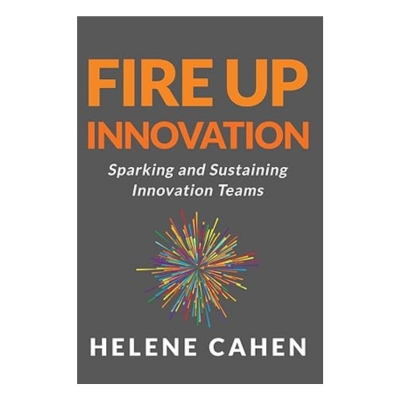
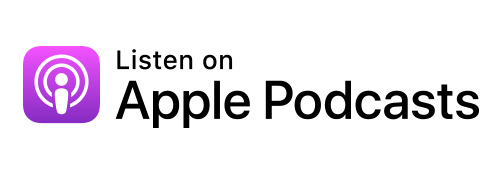

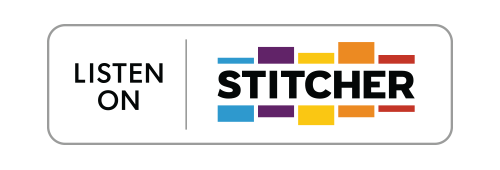


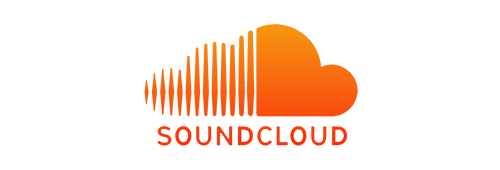

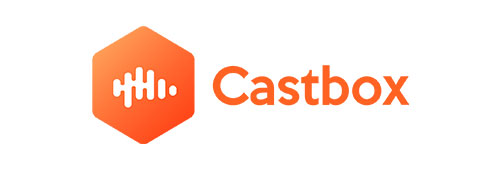
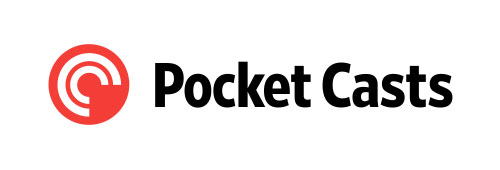
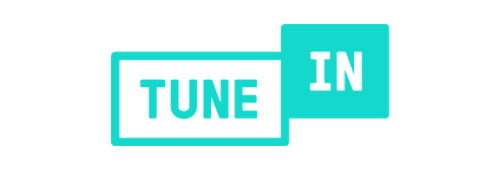
Leave a Reply